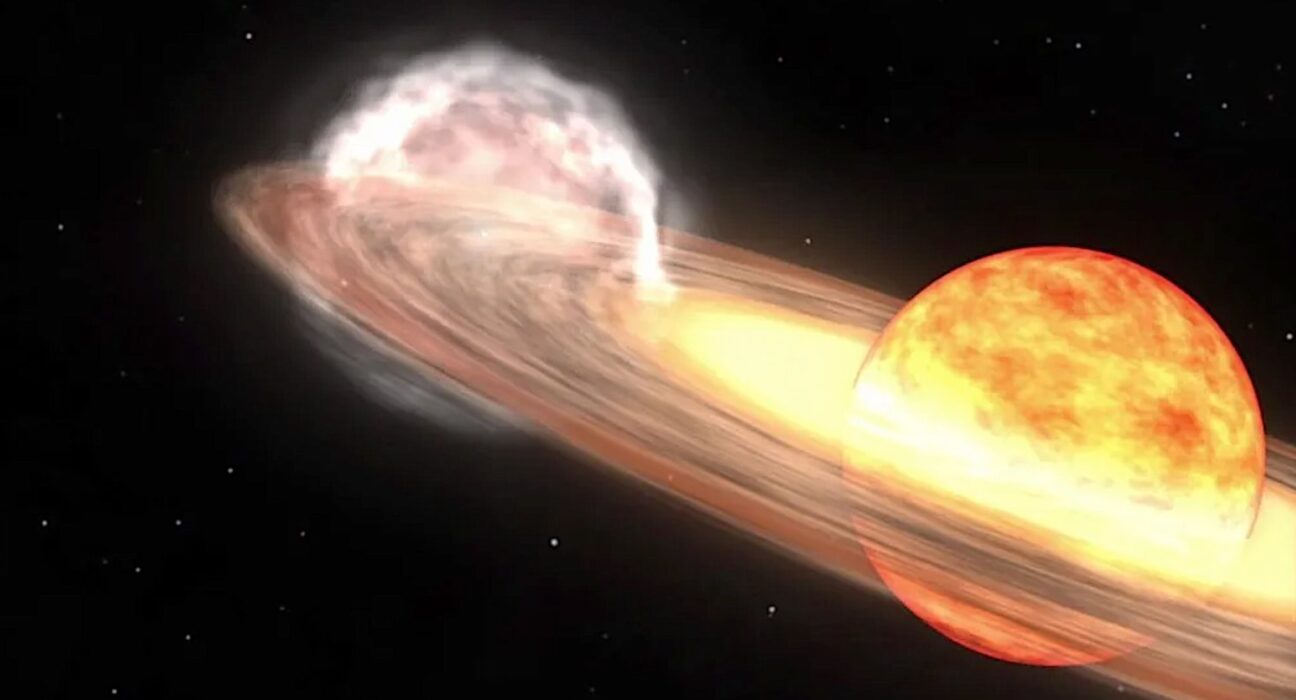If you gaze up at the night sky in the southern hemisphere, you might be treated to a truly exceptional sight. Two exploding stars, V572 Velorum and V462 Lupi, have recently burst into brilliance, creating a dazzling display that is captivating astronomers and stargazers alike.
The All-Sky Automated Survey for Supernovae (ASAS-SN), operated by Ohio State University, discovered the first nova explosion on June 12 in the constellation Lupus. This event, now known as V462 Lupi, caused an otherwise ordinary star to dramatically increase in brightness from a dim magnitude of +22 to a striking peak brightness of around +5.5. Suddenly, what was once invisible became visible to the naked eye.
Just when astronomers thought they had witnessed a once-in-a-lifetime event with V462 Lupi, another nova explosion took place on June 25 in the constellation Vela. This second burst of light, named V572 Velorum, mirrored its predecessor by reaching a similar peak brightness of +5.5. The simultaneous appearance of these two novas is exceptionally rare and has sparked excitement within the scientific community.
According to veteran science communicator Joe Rao, both novas are likely part of binary star systems consisting of a white dwarf and another star. These explosions occur due to a process where material from the companion star is drawn towards the white dwarf until it triggers a cataclysmic thermonuclear blast on its surface. Unlike supernovae that obliterate stars entirely, novas result in an eruption that increases their apparent brightness significantly without destroying them.
Rao emphasized the uniqueness of this celestial phenomenon by stating that having two novas visible simultaneously is extremely uncommon throughout history. He pointed out past instances like the eruptions of V368 Aquilae and V630 Sagittarii in 1936 but noted that those novas faded quickly after peaking.
Despite their spectacular brightness now visible across dark skies in the southern hemisphere, these novas may fade from view over time as their luminosity decreases gradually or rapidly depending on individual characteristics.
For observers eager to catch a glimpse of these cosmic explosions themselves, locating V462 Lupi near Delta Lupi and Kappa Centauri in Lupus or finding V572 Velorum close to Mu Velorum and Phi Velorum in Vela can be rewarding experiences under clear skies.
As you marvel at these newfound stellar phenomena glittering above us, remember that such events remind us of nature’s awe-inspiring power and beauty present throughout our universe – just waiting for us to look up and appreciate its wonders.

